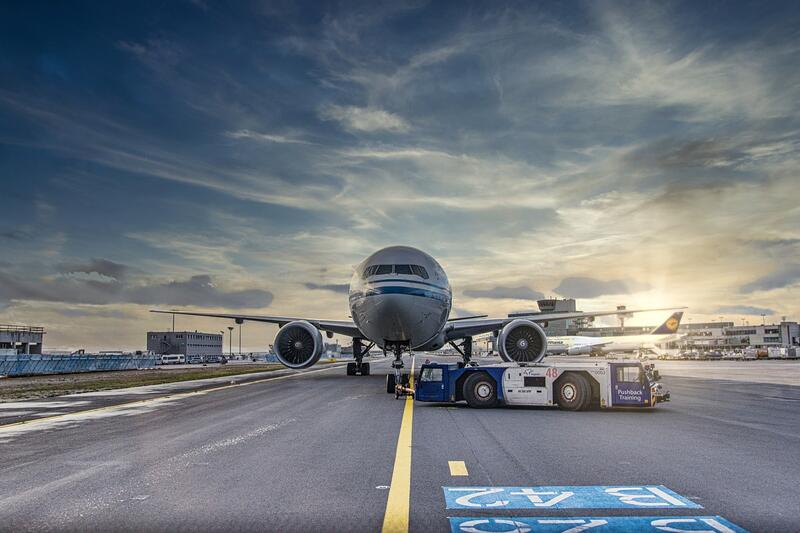Advancing Towards Decarbonization in Service activities incidental to air transportation
This article discusses the efforts being made to reduce carbon emissions in service activities related to air transportation, such as ground handling and catering.

The aviation industry is a significant contributor to global carbon emissions, accounting for approximately 2% of global greenhouse gas emissions. The service activities incidental to air transportation sector, which includes ground handling, catering, and maintenance, also contribute to carbon emissions. Decarbonisation in this sector is essential to meet the global climate goals and reduce the impact of aviation on the environment. This article will explore the concept of decarbonisation in the service activities incidental to air transportation sector, the main sources of carbon emissions, strategies to reduce carbon emissions, challenges facing decarbonisation, and the implications of decarbonisation for the sector.
What is Decarbonisation in Service Activities Incidental to Air Transportation Sector and Why is it Important?
Decarbonisation refers to the process of reducing carbon emissions to zero or near-zero levels. In the service activities incidental to air transportation sector, decarbonisation involves reducing the carbon emissions associated with ground handling, catering, and maintenance activities. Decarbonisation is important to mitigate the impact of aviation on the environment and meet the global climate goals. The aviation industry is one of the fastest-growing sectors, and its carbon emissions are projected to increase significantly in the coming years. Therefore, decarbonisation is crucial to reducing the carbon footprint of the aviation industry and achieving a sustainable future.
Main Sources of Carbon Emissions in Service Activities Incidental to Air Transportation Sector
The service activities incidental to air transportation sector contributes to carbon emissions through various activities, including ground handling, catering, and maintenance. The main sources of carbon emissions in this sector are:
- Ground Handling: Ground handling activities, such as baggage handling, aircraft towing, and refuelling, contribute to carbon emissions. The use of diesel-powered vehicles and equipment in ground handling activities is a significant source of carbon emissions.
- Catering: Catering activities, such as food preparation and transportation, also contribute to carbon emissions. The use of fossil fuels in the transportation of food and the energy-intensive food preparation process are significant sources of carbon emissions.
- Maintenance: Maintenance activities, such as engine maintenance and repair, also contribute to carbon emissions. The use of energy-intensive equipment and the disposal of hazardous waste generated during maintenance activities are significant sources of carbon emissions.
Strategies to Reduce Carbon Emissions in Service Activities Incidental to Air Transportation Sector
Several strategies can be implemented to reduce carbon emissions in the service activities incidental to air transportation sector. These strategies include:
- Use of Electric Vehicles: The use of electric vehicles in ground handling activities can significantly reduce carbon emissions. Electric vehicles have zero emissions and are energy-efficient compared to diesel-powered vehicles.
- Renewable Energy: The use of renewable energy sources, such as solar and wind energy, can reduce carbon emissions in catering and maintenance activities. The use of renewable energy sources can also reduce the reliance on fossil fuels and lower the carbon footprint of the aviation industry.
- Energy Efficiency: Improving energy efficiency in catering and maintenance activities can significantly reduce carbon emissions. Energy-efficient equipment and processes can reduce energy consumption and lower the carbon footprint of these activities.
- Waste Management: Proper waste management practices can reduce the carbon emissions associated with maintenance activities. Recycling and proper disposal of hazardous waste can significantly reduce carbon emissions.
Challenges Facing Decarbonisation in Service Activities Incidental to Air Transportation Sector
Several challenges face decarbonisation in the service activities incidental to air transportation sector. These challenges include:
- Cost: Implementing decarbonisation strategies can be costly, and the cost may be passed on to the airlines and passengers. The cost of implementing decarbonisation strategies may also be a barrier to adoption, especially for smaller companies.
- Infrastructure: The infrastructure required to implement decarbonisation strategies, such as electric vehicle charging stations, may not be readily available, especially in developing countries.
- Technology: The technology required to implement decarbonisation strategies may not be readily available or may be expensive. Developing and implementing new technologies can also be time-consuming.
- Regulatory Environment: The regulatory environment may not be conducive to decarbonisation. Regulations may not require companies to reduce their carbon emissions, or the penalties for non-compliance may not be significant.
Implications of Decarbonisation for Service Activities Incidental to Air Transportation Sector
Decarbonisation in the service activities incidental to air transportation sector has several implications for the sector. These implications include:
- Increased Efficiency: Decarbonisation strategies, such as the use of electric vehicles and renewable energy, can increase the efficiency of ground handling, catering, and maintenance activities. Increased efficiency can lead to cost savings and improved service delivery.
- Improved Environmental Performance: Decarbonisation can significantly reduce the carbon footprint of the aviation industry and improve its environmental performance. This can lead to a more sustainable future for the industry.
- Competitive Advantage: Companies that adopt decarbonisation strategies can gain a competitive advantage by demonstrating their commitment to sustainability. This can attract environmentally conscious customers and investors.
Conclusion
Decarbonisation in the service activities incidental to air transportation sector is essential to mitigate the impact of aviation on the environment and achieve a sustainable future. Ground handling, catering, and maintenance activities are significant sources of carbon emissions in the aviation industry. Strategies such as the use of electric vehicles, renewable energy, energy efficiency, and waste management can reduce carbon emissions in these activities. However, several challenges face decarbonisation, including cost, infrastructure, technology, and the regulatory environment. Decarbonisation has several implications for the service activities incidental to air transportation sector, including increased efficiency, improved environmental performance, and a competitive advantage. Ultimately, decarbonisation is crucial to reducing the carbon footprint of the aviation industry and achieving a sustainable future.